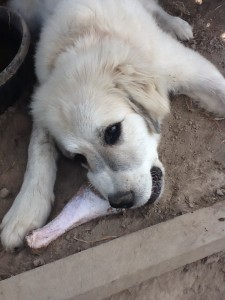
♦ ♦ ♦ ♦ ♦ ♦ ♦ ♦ ♦ ♦ ♦ ♦ ♦ ♦ ♦ ♦ ♦ ♦ ♦ ♦ ♦ ♦ ♦ ♦ ♦ ♦ I want to start by saying this post is NOT a how-to. This post is a “this is what we have done and learned about feeding a raw food diet to OUR dogs” post. PLEASE do your own research before you make any changes to your dog’s diet. This post does not apply to cats. They also benefit from a raw diet, but there is a specific nutrient, taurine, that needs to be addressed for feline health. ♦ ♦ ♦ ♦ ♦ ♦ ♦ ♦ ♦ ♦ ♦ ♦ ♦ ♦ ♦ ♦ ♦ ♦ ♦ ♦ ♦
I first learned about feeding real raw food to a dog from a friend who owned a dog that was about 3 times older than I would have guessed. Her coat had a shine that put shampoo commercial hair to shame. She had a pep in her step and sparkle in her eyes. We didn’t have a dog, but I was convinced when we did, we would feed raw.
When we brought Maxie, our Great Pyrenees, home, we fed her the kibble she had been given as to not cause any stomach issues. Slowly, we started giving her real meat with bones. A friend of ours was cleaning out his freezer and so were the in-laws, so we had a deer leg and turkey to start with. I looked up how much she should be getting as a puppy, added a bit more since she was a large breed, and began to cut up and weigh meat. As eager as I was to feed her this way, it went against everything I knew and scared me to death. Would I be the reason she died choking on a bone? So I watched her eat three times a day for a few weeks. After that, I knew she would be fine.
When we found Maude, the poodle, she was a wreck…hardly any teeth and what she had were bad, a giant growth on her neck, cataracts, and a skin yeast infection that was dis-gust-ing! Knowing she was old, hadn’t been taken care of, and probably not going to live much longer, we decided to have her fixed up and let her live out her last bit of time with us. Little did we know she had a lot more time and spunk left in her. We were giving her kibble and meds for the yeast issue and her eyes. She reluctantly ate the kibble, but when we switched her to chicken, she was in heaven. No more pushing her bowl around the house to let us know she wanted something else. It took about 3 months of raw food and weekly bathing, but the yeast was gone, never to return. Now I can bathe her every 3 months or so and she is fine. Since she has only a few teeth, we grind up her chicken, bones and all, with sardines. On a recent routine check-up the vet suggested having her kidney and liver levels tested. Because she was at least 13 years old, she thought we needed to know if any issues or failure was happening. Now, she may have been just fine before the raw diet, but it’s hard to believe that a 13+ year old poodle that was in the sad shape she was in when we found her would have perfect liver and kidney results. And, she has shown no signs of slowing down. (Update: Maude died at the ripe old age of 16)
We used to have kibble as back-up, but since we increased chicken production, we have a freezer full of dog food. The hardcore raw dieters will say to never give your dog kibble again. I say, you’ll always forget to defrost some food or run out, so if you don’t want them to skip a meal, which isn’t all that bad, have an emergency stash of kibble. Buy the best quality stuff you can, and use it sparingly. We use the seventh day fast, and everyone survives it. Skipping a meal every 7 or 14 days helps to clean out their system.
So how do you start feed real raw food to your dog? Get some meat and put it in the bowl. It really is that simple. If you have a dog that inhales kibble, start feeding the meat frozen. This should slow them down and once they get the hang of it, you can feed normally. We keep about 4-5 days worth of chicken in the fridge in a stock pot. Maxie and Zeke get one leg/thigh or a whole carcass and Bonnie gets either a leg, thigh, or half a carcass. All dogs also get an egg or two, some leftover scrap meat from dinner, or bone broth. When they get kibble, it is soaked in eggs and broth. For Maude, we would grind up whole carcasses and freeze it in yogurt cups. She’d get about 3 heaping tablespoons a day, usually with an egg. We switched to making meal size patties–less mess and freezer space.
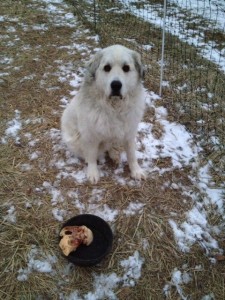
The general guideline for how much to feed is approximately 1-2% of the adult dog’s normal weight. So a 50 pound dog would get between 1/2 and 1 pound of food a day. With more active dogs, you may want to feed closer to 3%. You want to aim for:
- 10-15% bones
- 5-10% offal
- 60- 75% meat
So a chicken leg/thigh or carcass is a good ratio. It does not have to be exact. If you feel like they got a lot of bone one day, the next day go heavy on the meat.
The main question we get is “Won’t they get salmonella?!” If you have a dog that has access to the outside, the garbage, the woods, or anywhere you can’t watch them constantly, I can almost guarantee you they are eating something funk nasty. Our dogs come home with rotten deer parts, half decomposed I am not even sure what, and clean up the property of most of the chicken poop. Maude especially liked chicken poop in the winter, or as we called it, poop-cicles. I have seen Bonnie eat something rotten, vomit it up, and leave it alone. They know what not to eat and what they can get away with. When dog food is recalled for salmonella exposure, it’s not because your dog may get sick, it’s because YOU may get sick handling it. And just like when you handle your own food, you use the same safe handling methods with raw dog food.
Everyone says, “But bones are bad for dogs. They will die eating them.” True and False. If you feed your dog a COOKED bone, there is a good chance it could cause some damage to your dog. A cooked bone will splinter and get stuck in the throat or intestinal tract. DO NOT EVER FEED ANY COOKED BONES TO YOUR DOG. A RAW bone is soft and pliable, even chicken bones. Dogs can chew them up and digest them just fine. You should always use common sense and if you feel nervous about a raw bone, only feed it when you can stay and watch. I still do this sometimes.
We also hear, “My dog loves vegetables and grains. If they eat it, how can it bad for them!?” How many things do you eat that you know are not the best for you? If you leave me with a box of Girl Scout Thin Mints guess what will happen? I will eat the whole box, feel sick for the rest of the day, swear to never do it again…until I am alone with another box. Dogs will eat what’s available. Even though they are far removed from their wild roots, the “I must eat all of what is in front of me to survive” mentality still lingers. A dog’s digestive system is not made to process grains, fruits, or vegetables on a daily basis. They will do it, but it takes a toll on the system. Sweet potatoes are a popular kibble ingredient even though they are high in sugar and a dog is not good at processing high amounts of sugar. The added sugar is one of the things that contributes to skin conditions, like Maude’s yeasty skin. You’ll see recipes for homemade dog food with blueberries, spinach, carrots, vitamin packs, and all sorts of things to make is seem healthy. Those ingredients are for you, for us, to feel like we are giving our dog a balanced diet. Meat, bone, and offal give a dog all the nutrients they need.
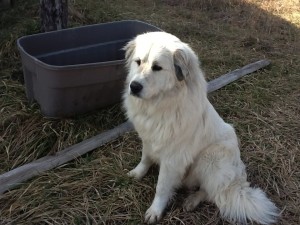
A dog’s digestive tract is not made to eat dry food, just like ours is not. They need food with moisture in it. We can both power through a dry diet, but it will take a toll on our system and we will need a lot of extra water to process it. So what about canned food? You still have the problem of a lot of unnecessary junk in it. The problem with commercial pet food is they are heated to such a high level, if there was anything beneficial in it, it’s dead. Kibble is put through a heating and extruding process that makes it basically like cardboard. Many companies have turned to adding probiotics and replacing corn with rice, but you still have a product that is made for consumer convenience, not canine health.
Some people have switched their allergy bombarded dogs to raw food and within a month or two seen great improvement and eventually all allergy symptoms are gone. I have heard of a lot of dogs with thyroid problems cured once switched to raw food. Most pet owners who have “sick” dogs, buy expensive kibble and lots of expensive meds. If you do the cost benefit of switching to raw food, in the worst case, you would be spending the same amount of money on a better quality of life. In the best case, you will pay the same or less for food, no longer have to buy meds, no more trips to the vet, and they can have a better quality of life.
To us, the benefits of feeding real raw foods to our dogs are too great to go back to a kibble only diet. Maxie is 6 and her teeth are sparkling. Zeke is growing by leaps and bounds. Bonnie’s teeth have significantly improved since we switched her. Maude’s yeasty skin was cured.
Most of the dogs poop away from the house, but on the occasion that I do find a poop in the yard, I don’t pick it up. Why? Because it does not smell and will be gone in about a day. When you feed raw, the poop is drier, smaller, and smells less. Stepping dog poop makes me c-r-a-z-y! With our dogs, I don’t care because it will literally fall off my boot.
Since we raise meat chickens, after we package the people food portion of the chicken, everything else gets bagged for the dogs. Only heads and feet get composted. Although you can feed those to dogs, I don’t want the chicken protector to eat the heads or feet (the feet are saved for stock). Ideally, we would like to raise enough chicken, beef, and pork to not have to buy any dog meat from the store. This past year we were pretty close to that goal.
If you want to make the switch to a raw diet, there are a lot of good resources, but here are the ones I recommend for clear concise info on a real raw food diet.
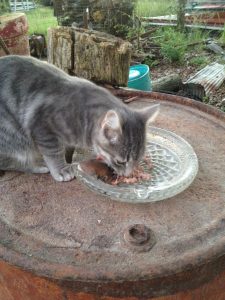
Have more questions? Click here
What about commercial raw food? Click here
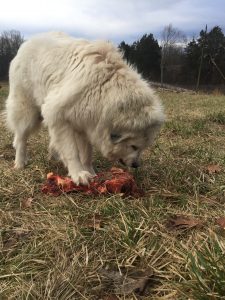
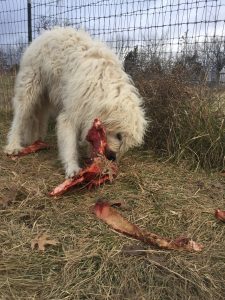

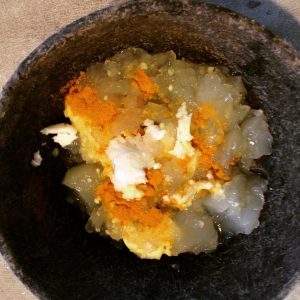
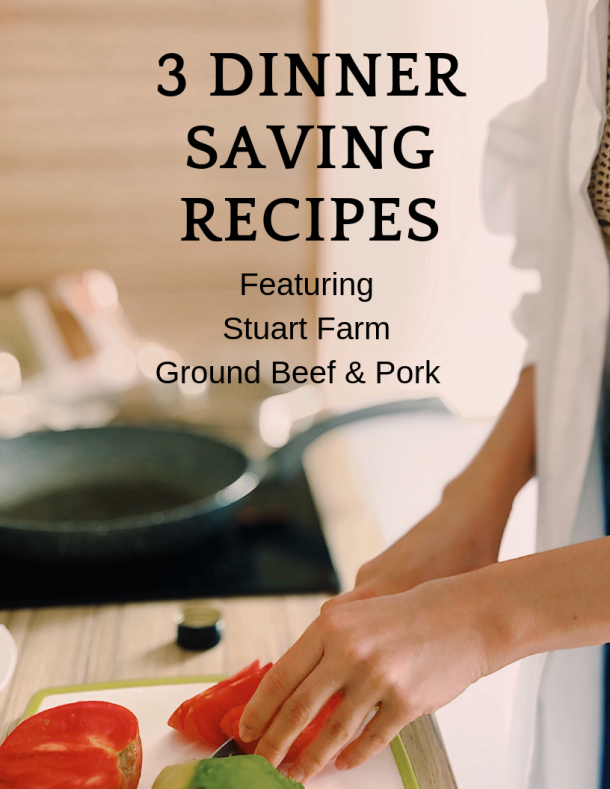
Thank you so much I think I’m gonna start going raw meet tomorrow. I also have a Great Pyrenees 7 years boy. His name is sai. He had a skin problem and ear infection through the years it get worse and worst. I will update and see how this will go I’ll start with him turkey and chicken.
For the skin problem on our poodle, I used this rinse and it helped A LOT: in a 1-gallon jug, add 1 cup of apple cider vinegar, 1 cup hydrogen peroxide, and fill the rest with water. I would use this after her bath and just as a weekly rinse sometimes. Do not wash it off. I hope switching to raw food helps your boy.
Keep doing good work. Thanks for this guide.
Made the switch..glad I did ..thanks for writing this..I was afraid to go raw.. But your story really helps..the recalls today on kibbles..made me take the leap..thanks again..Brutus says thanks to.
You are both welcome! If anything comes up, I’m here for you.
Thank for sharing this interesting info with your readers. Is a good one, keep going!